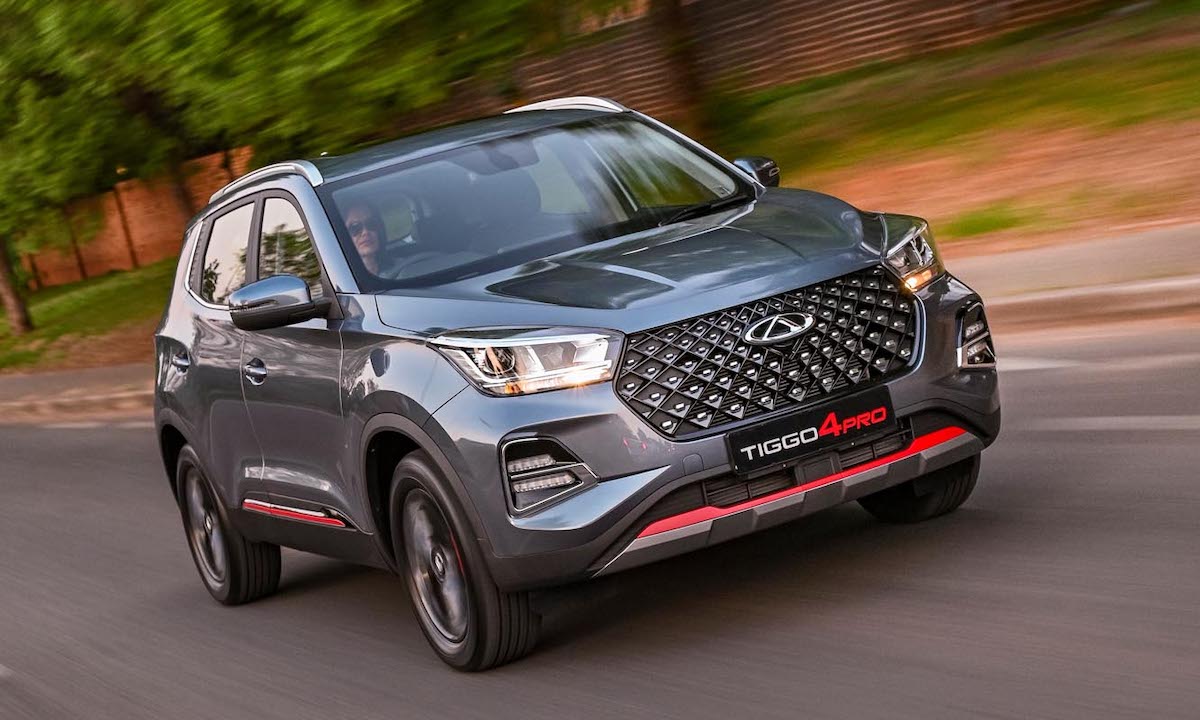
Andrew Muzamhindo Analyst The Chery Tiggo 8 Pro is one of those few remarkable newcomers to the market. It’s really difficult to fault, and deserves consideration on its own merits, rather than just its price tag. I estimate that landed in Zimbabwe, it will cost not more than US$50 000 competing with Toyota RAV4, Renault Koleos, Haval H6 and Nissan X-Trail and Qashqai
The Chery Tiggo 8 Pro is perhaps the most-European Chinese car out there at the moment, with a decidedly Germanic driving experience and similar attention to small details. I know we still drive the badge but look at Haval. They literally disrupted the local market with a good product and aggressive marketing. Some buyers are realising that a premium name isn’t really worth that much extra money, anyway – especially when the alternative is so agreeable! The Chery Tiggo feels almost-European in concept and execution. Only at a much, much lower price.
Styling With a classy mix of sharp edges, lean surface detailing, and pronounced but neatly-integrated character lines, the Tiggo 8 Pro cuts a surprisingly upmarket dash. While styling cues from other manufacturers can be detected, it all meshes into a harmonious whole that still manages to look quite distinctive. The “starry night” grille is large and imposing, and it looks like nothing else out there. Flanked by squinting, slim LED headlights and underscored by large air intakes and silver skid-plate detailing, the Tiggo 8 Pro has an assertive front end, and drew compliments from all onlookers.
In fact, the Tiggo 8 Pro’s appearance was praised from all angles, with the Audi-like detailing in the LED tail light clusters and sequential indicators getting particularly widespread approval. The 18-inch alloy wheels with their diamond-cut finish also received positive feedback.
Overall, the appearance is about as attractive as a mid-sized SUV could be, enhanced on our test car by the intriguing metallic/pearl purplish-blueish-blackish paintwork and well-integrated trim strips. And, crucially for Chery, the Tiggo 8 Pro also looks quite a bit more expensive than it really is.
Interior The seats are astoundingly put together and upholstered in super-soft, medium-brown leather with classy-looking diamond-pattern stitching. There are matching brown inserts in the door cards and on the dashboard as well, giving a consistently upmarket ambience to the cabin.
The seats themselves are superb, and easily accommodated this writer’s 1.93-meter frame in supple comfort. Particularly noteworthy are the “wraparound” head restraints, which evoke the seats you’d enjoy on a business-class flight, and adds something more to set the Tiggo 8 Pro’s cabin further apart from the herd.
Oddment stowage for the front seats is generous, with voluminous door bins and cubby hole, cupholders, a refrigerated centre armrest/box (with various configuration options and two USB ports), and a split-level centre console. While there’s no oddment space in the piano-black upper portion of the console, the lower level houses a convenient and fairly deep tray, as well as a wireless charging pad.
- Chamisa under fire over US$120K donation
- Mavhunga puts DeMbare into Chibuku quarterfinals
- Pension funds bet on Cabora Bassa oilfields
- Councils defy govt fire tender directive
Keep Reading
The other seats are pretty comfortable, too, with lots of cabin space and a large measure of adjustability for the second seating row. These seats can slide (in a 60:40 split) fore-and-aft, and features individual backrest angle adjustment as well, thus allocating space between the rearmost two seating rows.
If the second row is set midway between its extremes, there’s even decent space in the third row to accommodate two average-sized adults back there. This is unusual, because the 6th and 7th seats in vehicles of this type are generally only suitable for smaller occupants, and then only for short trips.
Other comfort concessions for the rear cabin includes a separate air-con system with its own compressor, fan, and lots of integrated air vents. This is only fitted in high-spec “Executive” trim as tested, however, as the base “Distinction” trim makes do with a mere 2-zone climate control system.
In 5-seater mode, the cargo area is cavernous, with up to 892-litres available in a luggage compartment that’s wide, deep and long.
Obviously, this takes a hit when the third seating row is erected (via simple but sturdy pull-straps), as the luggage space drops to only 193-litres in this configuration. On the upside, rear privacy glass is standard, and helps to keep the contents of the cargo hold hidden from prying eyes.
As for the cabin’s design, it again mirrors some upmarket influences in its styling and detailing. There’s some Mercedes in the front door cards, and a fair bit of BMW and Audi in the dashboard. But, yet again, it doesn’t look like a mash-up as much as it looks like it borrowed from the best in the business, before integrating it all into a homogeneous whole.
The build quality comes with high-quality material and fine finishes evident almost as far as the eye could see. Sure, the switchgear doesn’t feel as solidly-weighted as you’d find in an Audi, for instance, but it comes so close that most occupants won’t ever notice. And, while the lower dash and door cards are trimmed in hard plastic, it’s well-made and didn’t emit a single rattle or squeak in a week’s worth of driving.
Standard equipment Let’s start with the screen setup. In front of the driver is a digital instrument cluster, measuring 12.3-inches in size. This is a bit excessive, really, because the cluster’s graphic design contains lots of blank space.
It’s easy to read, but the absence of a customisable driver’s display is a bit of a let-down: Allowing a driver to choose different display styles should be easy enough for a system with this capabilities and resolution, and the “revolving drums” which indicate speed and engine revs can become distracting after a while. Perhaps a future software update will eventually allow more options, but for the moment, this is a strange omission on the Tiggo 8 Pro’s spec sheet.
Performance and driving impression The Chery Tiggo 8 Pro is powered by one of Chery’s award-winning turbo-petrol engines with direct injection and intelligent control.
The 1.6 TGDI was lauded in the China Heart engine competition for its high-tech design, which allows the engine to reach previously unheard-of levels of efficiency that benefit both power and fuel consumption. As fitted to the Tiggo 8 Pro, the 1.6 TGDI delivers a maximum power output of 145 kW at 5 500 rpm and a solid 290 Nm across a notably wide powerband between 2 000 rpm and 4 400 rpm. The engine is mated to a seven-speed dual-clutch transmission (7DCT) that delivers power to the front wheels.
To best utilise the power and smooth engine characteristics, Chery has tuned the electric power steering system for improved feedback and has added Standard, Eco and Sport driving modes. The steering further offers Eco and Sport driving modes, where the feedback and feel of the steering system adjust to the driver intent.
Safety The full house of standard features continues when the safety specifications are examined. Executive trim includes a plethora of add-on safety features, to go with the Tiggo 8 Pro’s standard package of 6 airbags, a 360-degree camera system, rear parking sensors, stability control, emergency brake assist, rear ISOFIX child seat anchors, and a 5-star C-NCAP crash test rating.
That camera system is particularly impressive, and is on par with the top-shelf systems which are generally offered as options with most premium-branded SUVs. The display quality is crisp and easy to interpret, the dynamic reversing guidelines are intuitive, and it can even be set to automatically show the view down the car’s side when turning the steering wheel in either direction.











